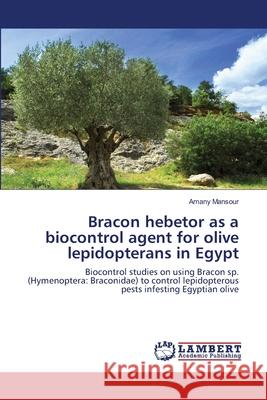Bracon hebetor as a biocontrol agent for olive lepidopterans in Egypt » książka
Bracon hebetor as a biocontrol agent for olive lepidopterans in Egypt
ISBN-13: 9783659185830 / Angielski / Miękka / 2012 / 184 str.
Bracon hebetor as a biocontrol agent for olive lepidopterans in Egypt
ISBN-13: 9783659185830 / Angielski / Miękka / 2012 / 184 str.
(netto: 290,36 VAT: 5%)
Najniższa cena z 30 dni: 304,88 zł
ok. 10-14 dni roboczych
Bez gwarancji dostawy przed świętami
Darmowa dostawa!
The aim of this work was to isolate the larval parasitoid Bracon sp. from Egyptian olive, exploring the extend of its potentiality and suitability as a biocontrol agent could be integrated in the future with Trichogramma egg parasitoid that is widely used in combating olive lepidopterans or any other control measure. In this respect, the intended candidate was isolated from Matrouh, Egypt and identified as Bracon hebetor Say (Hymenoptera: Braconidae). This was the first time to record this parasitoid in olive and hence, this was the first time to record it on the olive leaf moth; Palpita unionalis. In an experiment simulating what happens in nature, female bioactivities were studied under the free choice of the examined females on the last larval instars of the greater wax moth; Galleria mellonella and P. unionalis. Suitability of different larval ages of the last host for parasitoid reproduction was studied. The effect of different densities of the last larval instars of both hosts on female bioactivities was examined. The effect of parasitoid aggregation was studied on both hosts. Finally, some parasitoid female bioactivities after long-term rearing on both hosts were measured.











